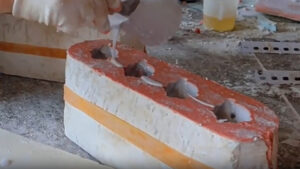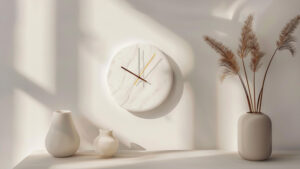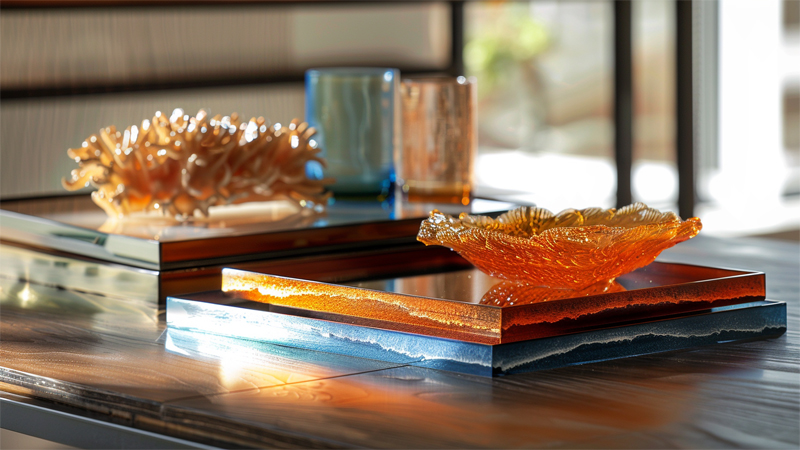
Choosing the right material for statue figurine trays is essential for quality and aesthetics.
Resin is favored for its versatility, durability, cost-effectiveness, and ability to mimic various textures and finishes in statue figurine trays.
Let’s explore the materials commonly used and why resin stands out.
What are the common materials used, including wood, metal, glass, and resin?
Understanding the variety of materials helps in selecting the best option for your tray designs.
Wood, metal, glass, and resin are the primary materials for statue figurine trays, each offering unique benefits and aesthetic qualities.
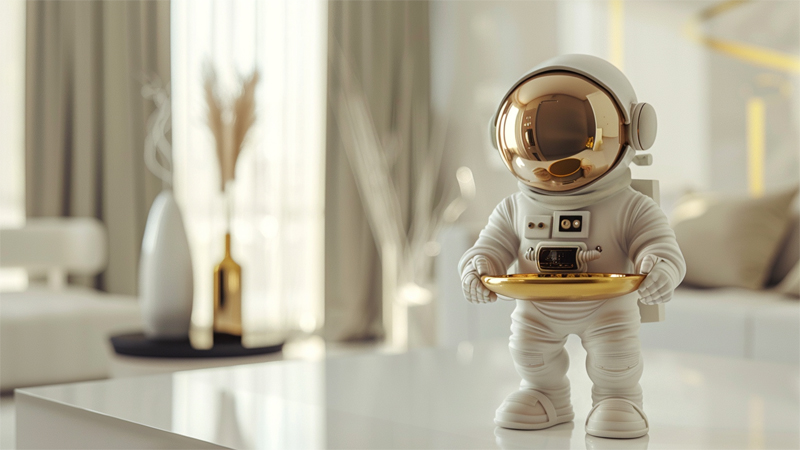
When I first ventured into creating statue figurine trays, I experimented with different materials to find the perfect fit. Wood brought warmth and a natural feel, metal1 offered strength and a sleek appearance, and glass2 provided transparency and elegance. However, it was resin that truly captivated me with its ability to combine the best of all these materials. Resin allows for intricate designs, vibrant colors, and durable finishes, making it a versatile choice for both traditional and contemporary styles.
Comparing Common Materials for Figurine Trays
Each material has its own set of advantages and challenges:
- Wood: Offers a classic and natural look but can be prone to warping and requires maintenance.
- Metal: Provides durability and a modern aesthetic but is heavier and can be expensive.
- Glass: Adds elegance and transparency but is fragile and limited in design versatility.
- Resin: Combines durability with design flexibility, allowing for a wide range of finishes and intricate details.
| Material | Advantages | Disadvantages |
|---|---|---|
| Wood | Natural look, warm aesthetics | Susceptible to warping, requires upkeep |
| Metal | Durable, sleek appearance | Heavy, higher cost |
| Glass | Elegant, transparent | Fragile, limited design options |
| Resin | Versatile, durable, customizable | Can be sensitive to UV light without additives |
By understanding these materials, you can make informed decisions based on your design goals and practical requirements.
How does resin benefit tray durability and design?
Resin enhances both the strength and aesthetic appeal of figurine trays.
Resin offers exceptional durability and design flexibility, allowing for intricate details and long-lasting finishes in figurine trays.
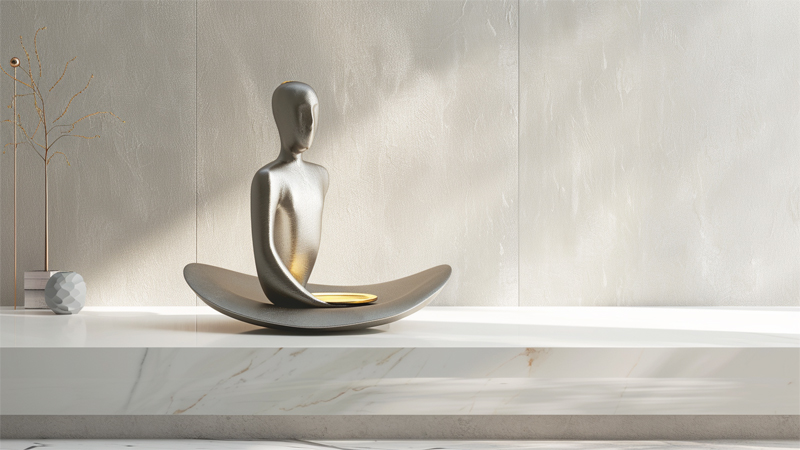
I recall a project where durability was paramount. Resin not only provided a sturdy base but also allowed for the creation of fine details that wood3 and metal couldn't achieve as easily. Its ability to be molded into various shapes and textures means that your creative vision isn't limited by the material. Whether you're aiming for a smooth, glossy finish or a textured, matte surface, resin can accommodate your design needs while ensuring the tray remains robust and resistant to wear and tear.
Enhancing Durability and Design with Resin
Resin's properties make it ideal for creating high-quality figurine trays:
- Impact Resistance: Resin can withstand drops and knocks, reducing the risk of damage.
- Detail Preservation: Captures fine details from molds, perfect for intricate designs.
- Customization4: Easily tinted with colors or mixed with additives for unique finishes.
- Lightweight: Durable yet lightweight, making trays easier to handle and transport.
| Benefit | Description |
|---|---|
| Impact Resistance | Reduces damage from accidental drops |
| Detail Preservation | Maintains intricate designs and textures |
| Customization | Allows for a variety of colors and finishes |
| Lightweight | Easier to handle and ship without compromising strength |
These benefits make resin a superior choice for artists and manufacturers aiming to produce high-quality, durable figurine trays.
How does resin affect cost and production efficiency?
Resin is a cost-effective material that streamlines the production process.
Using resin can lower production costs and increase efficiency through its ease of use and ability to produce multiple copies with consistent quality.
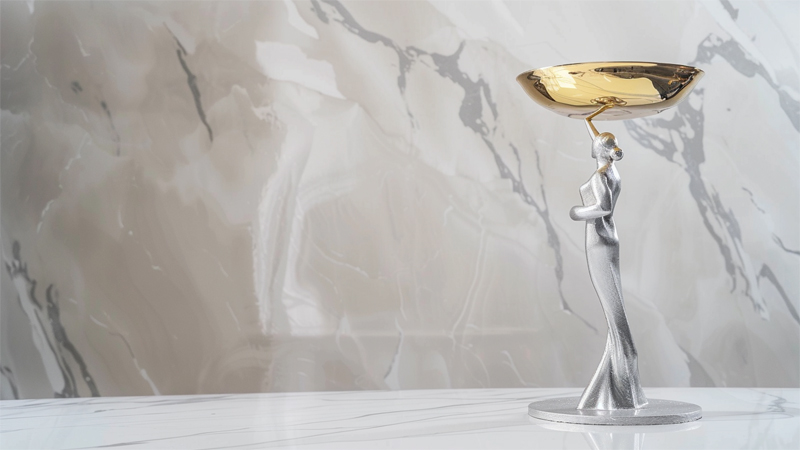
In my early days of production, managing costs was a constant challenge. Resin proved to be a game-changer by reducing material expenses and simplifying the manufacturing process. Unlike wood or metal, which require extensive machining and finishing, resin can be poured into molds with minimal preparation. This not only speeds up production but also allows for the creation of multiple identical trays without significant additional costs. Additionally, resin's compatibility with automated processes means that scaling up production is more manageable and less resource-intensive.
Cost and Efficiency Advantages of Resin
Resin offers several financial and operational benefits:
- Low Material Cost: More affordable than metals and certain woods.
- Ease of Molding: Simplifies the production process, reducing labor costs.
- Scalability: Easily produces large quantities without compromising quality.
- Minimal Waste: Efficient use of materials with reusable molds.
| Aspect | Resin | Other Materials |
|---|---|---|
| Material Cost | Lower compared to metal and certain woods | Higher for metals, variable for wood |
| Production Process | Simple molding and casting | Complex machining for metal, extensive finishing for wood |
| Scalability | Easily scalable with consistent quality | More challenging and costly to scale |
| Waste Reduction | Efficient material usage with reusable molds | Higher waste due to machining and cutting |
These factors contribute to resin's reputation as a cost-effective and efficient material for producing high-quality figurine trays.
How do consumer preferences influence material choice?
Consumer trends5 and preferences play a significant role in selecting the right material for figurine trays.
Understanding consumer preferences helps in choosing materials that align with market demands, ensuring the success of your figurine trays.
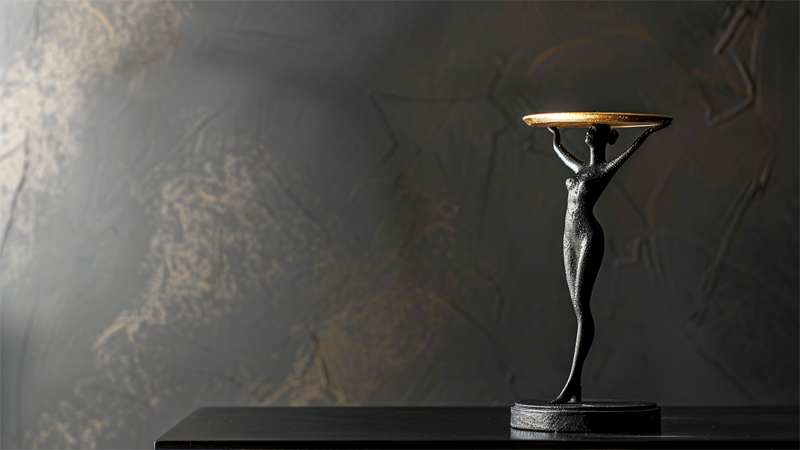
When I launched my first resin tray collection, I paid close attention to what customers were looking for. There was a clear preference for lightweight, durable, and aesthetically pleasing products. Resin met all these criteria and also allowed for customization options that consumers loved. By listening to feedback and observing market trends, I was able to tailor my products to better meet the needs and desires of my audience. This customer-centric approach not only boosted sales but also fostered loyalty and repeat business.
Aligning Material Choice with Consumer Preferences
Key consumer factors to consider:
- Aesthetics: Preferences for certain looks and finishes.
- Durability: Desire for long-lasting products.
- Price Sensitivity: Balance between quality and affordability.
- Eco-Friendliness: Increasing demand for [sustainable materials]().
| Consumer Preference | Material Suitability |
|---|---|
| Aesthetics | Resin offers versatile finishes and colors |
| Durability | Resin is strong and long-lasting |
| Price Sensitivity | Resin is cost-effective compared to alternatives |
| Eco-Friendliness | Bio-based resins cater to environmentally conscious consumers |
By aligning your material choices with what consumers value most, you can create figurine trays that resonate with your target market and drive business success.
Conclusion
Resin's versatility and benefits make it the top choice for statue figurine trays.
-
Adding a link to "Metal" offers you a detailed comparison between metal and resin, assisting you in making informed material choices based on your project requirements. ↩
-
Linking "Glass" educates you on the unique properties of glass, enabling you to weigh its suitability against resin for your specific design needs. ↩
-
Linking "Wood" provides you with comprehensive information on using wood as a material, helping you understand its advantages and limitations compared to resin. ↩
-
Providing a link to "Customization" allows you to explore various ways to personalize resin trays, enhancing your creative and design capabilities. ↩
-
Linking "Consumer Trends" offers you an understanding of current market preferences, enabling you to tailor your product offerings to meet consumer demands effectively. ↩


